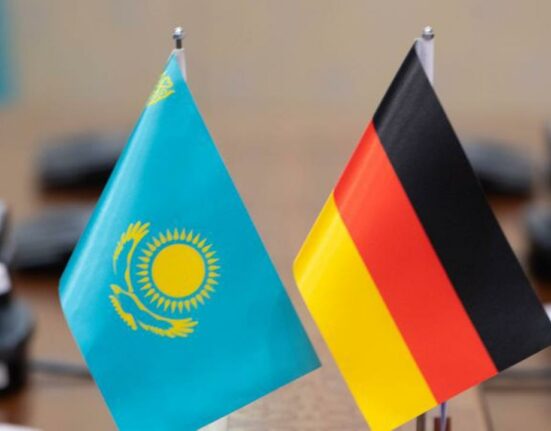Construction of a plant for the collection, transshipment and fractionation of liquefied petroleum gas (LPG) from the Kashagan oil field has begun in Kazakhstan’s Atyrau region. The project is aimed at ensuring stable supplies of LPG to the domestic market and reducing chronic shortages of this type of motor fuel.
LPG is the most affordable and widely used automobile fuel in Kazakhstan, and its supplies have long failed to meet demand. It is cheaper than gasoline and is the most popular and economical fuel amongst Kazakhstan’s vehicle owners.
According to the Ministry of Energy, construction work is currently in the initial phase, with the future plant’s territory being levelled, pits being prepared for laying concrete foundations, and welding work being done on the LPG pipeline. The first storage tanks for liquefied gas have been delivered to the site.
In September 2024, following the negotiations between the partners of the North Caspian Project and Kazakhstan’s national gas company QazaqGaz, with the participation of the Ministry of Energy of Kazakhstan, an agreement was signed regarding the sale and purchase of LPG from Kazakhstan’s Kashagan oil field.
The North Caspian Project was developed under the North Caspian Sea Production Sharing Agreement signed in 1997 by Kazakhstan and an international consortium including KazMunayGas (16.88%), Eni (16.81%), Shell (16.81%), ExxonMobil (16.81%), TotalEnergies (16.81%), CNPC (8.33%), and INPEX Ltd (7.56%).
According to the agreement, supplies of LPG from Kashagan will begin in December 2025 and by 2027, on completion of work on the infrastructure, reach over 700,000 tons per year.
The Ministry of Energy believes that supplies from Kashagan will help reduce the chronic shortage of LPG in Kazakhstan, and positively impact the socio-economic situation in the country’s regions.
The ministry earlier stated that in 2023, Kazakhstan had 582,000 motor vehicles running on LPG, an 18% increase compared to 2022 (491,000).
The government aims to meet rising LPG consumption by introducing new production capacities, with plans to increase annual LPG production to 4.2 million tons by 2032.




